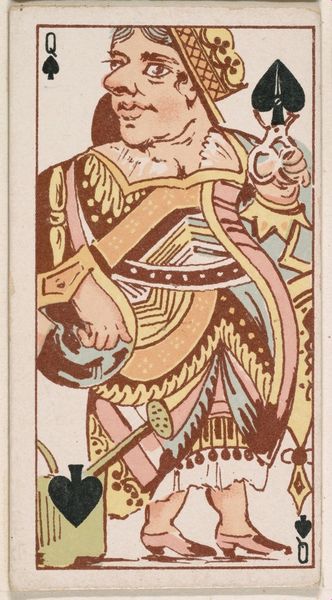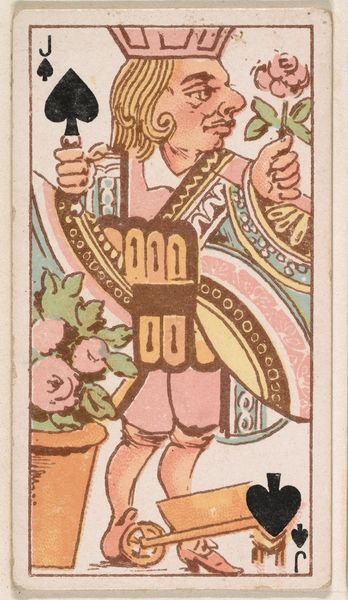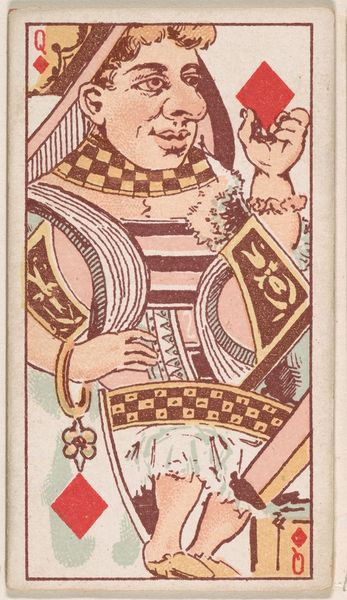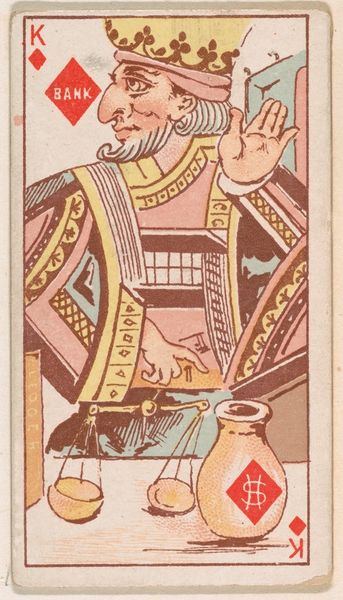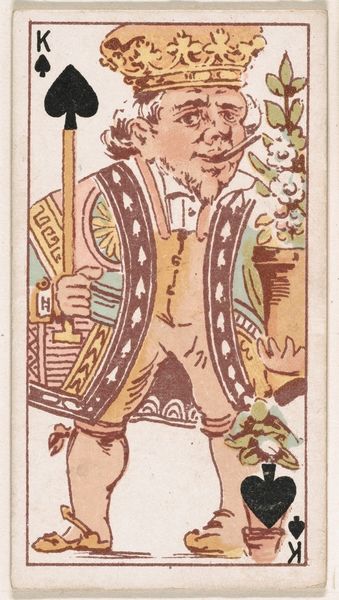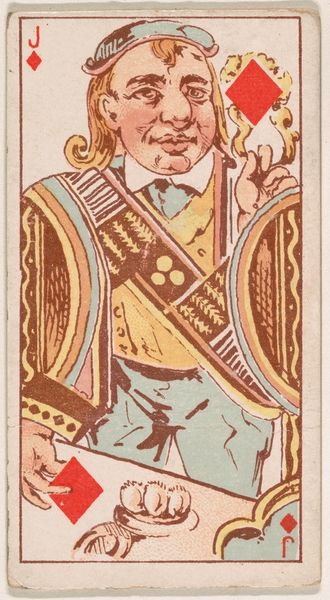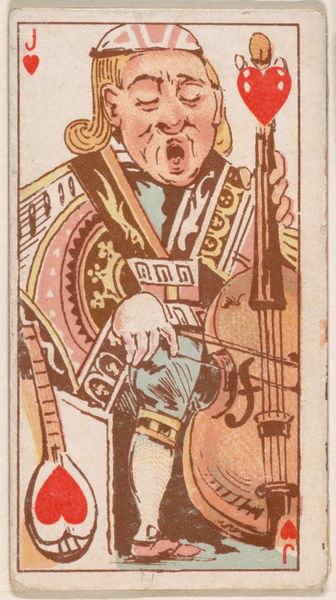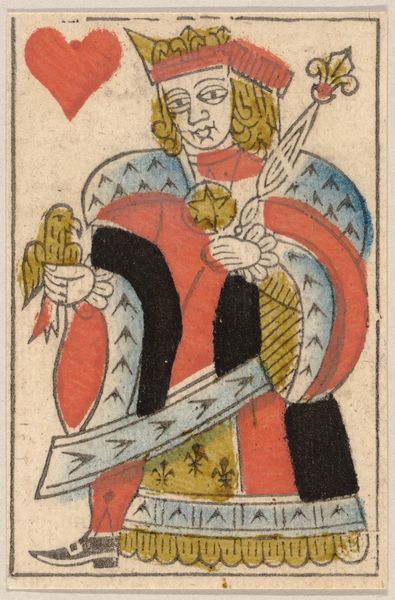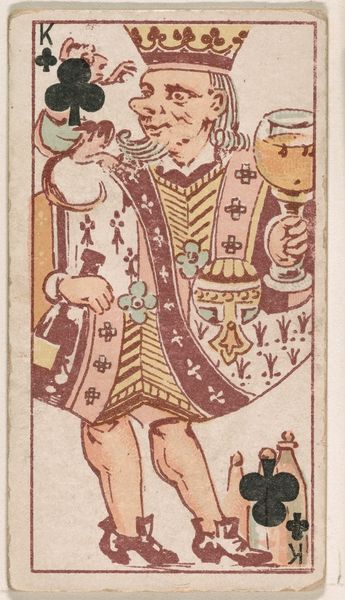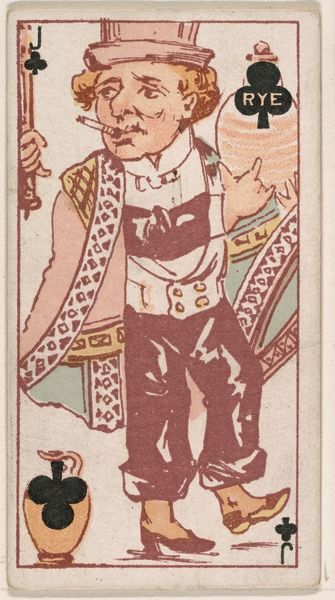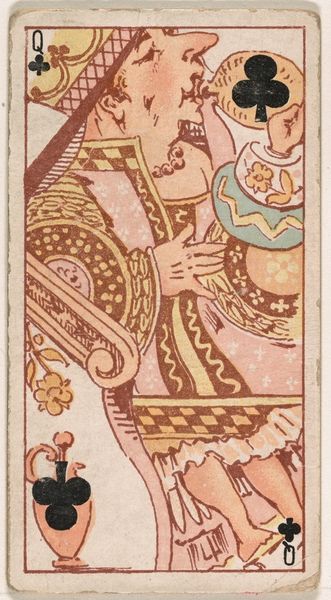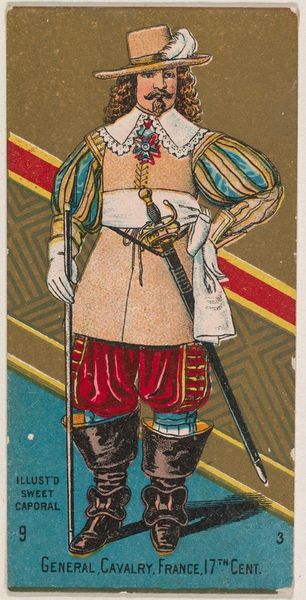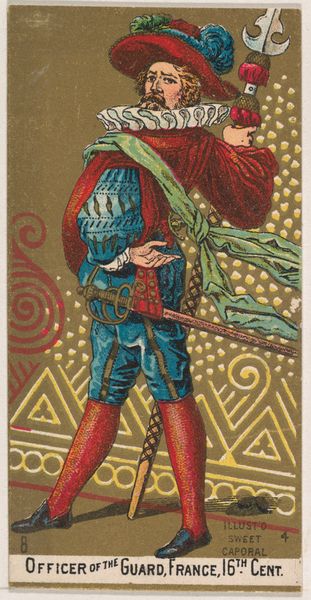
King of Hearts, from Harlequin Cards, 2nd Series (N220) issued by Kinney Bros. 1889
0:00
0:00
drawing, print
#
drawing
#
cartoon like
#
cartoon based
# print
#
old engraving style
#
junji ito style
#
illustrative and welcoming imagery
#
men
#
tattoo art
#
cartoon style
#
cartoon carciture
#
cartoon theme
#
doodle art
Dimensions: Sheet: 2 3/4 × 1 1/2 in. (7 × 3.8 cm)
Copyright: Public Domain
Editor: Here we have "King of Hearts" from Harlequin Cards, made in 1889 by Kinney Brothers. It looks like a drawing, or maybe a print. It's whimsical! Almost like a doodle. What’s your read on this card? Curator: It's intriguing to consider this within a materialist framework. This isn’t high art, right? It's a mass-produced card, a product of the Kinney Brothers Tobacco Company. How does its purpose – as a collectible inserted into cigarette packs – shape our understanding of its artistic merit? Editor: So, you're saying its value lies in being mass-produced, not being original artwork. It’s interesting because the style is what some would call "doodle art," with illustrative qualities. Curator: Precisely! Consider the labor involved: the initial design, the printing process, the distribution… these all point to a specific mode of production. Was the artist even credited? And what about the consumer? Who was collecting these, and what did it mean to possess this “King of Hearts?” Is it accessible to those who buy the products? Editor: That’s a great question! So much work to create what seems to be a simple card to be collected! How does this mass production technique shift the value? Is this “King of Hearts” art or merely a commodity? Curator: The ambiguity is crucial. It challenges the conventional hierarchy placing “high art” above these everyday objects. Its art is about the labor and production of everyday life being turned into commodities. Does it matter who the artist was if their work became a function of mass consumption? Editor: I see. Looking at it as part of the tobacco industry shines a whole new light. Curator: Exactly. We learn a lot by asking what it's for, what is its purpose, rather than focusing only on artistic beauty. What have you gathered about the object’s social function? Editor: I would not have considered labor, consumerism, or social impact before; thanks for pointing them out. It feels almost revolutionary, for it's democratized because of how accessible the image could be, regardless of quality. Curator: It is revolutionary, in its own way, as this object is rooted in social conditions. Now, imagine applying this to other “low art” objects.
Comments
No comments
Be the first to comment and join the conversation on the ultimate creative platform.
